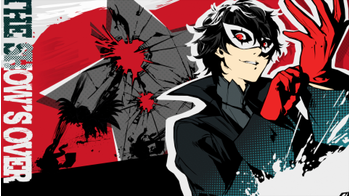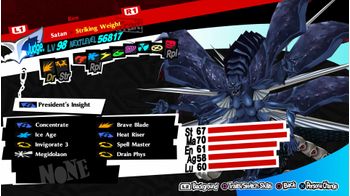
Persona 5 Royal Review
It’s been almost three years since the west got their hands on the most recent mainline entry in the Persona series. On release, it blew the minds of longtime fans and served as a great introduction to the overall Megami Tensei franchise for newcomers. Time has done the game fewer favors though, with its rise in popularity naturally leading it to be put under extensive scrutiny. Even having played every entry in the series before this, Persona 5 stood out as one of my favorite games of all time. It’s stylish take on the formula, in-depth battle and social mechanics, and return to the Tokyo setting that dominates mainline Shin Megami Tensei entries resonated with me.
I was able to forgive the flaws in the localization, time management (I’m certain “Cats telling people to go to sleep” is more prevalent in public cognition than “Cats turning into buses"), and uneven conclusion to its narrative. Even though I accepted that I loved the experience despite the occasional bumps, it doesn’t mean that I didn’t think it could have been improved. Atlus is known for making expanded re-releases for their popular titles in an attempt to reintroduce them for modern audiences. Persona 4 Golden, Catherine Full Body, Strange Journey Redux, Radiant Historia Perfect Chronology, are some recent examples of this trend. These re-releases have received criticism for being a bit formulaic, by often just inserting a new female character and throwaway storyline, so when Persona 5 Royal was announced just a few years after the release of the original game, many were skeptical about why it existed in the first place.
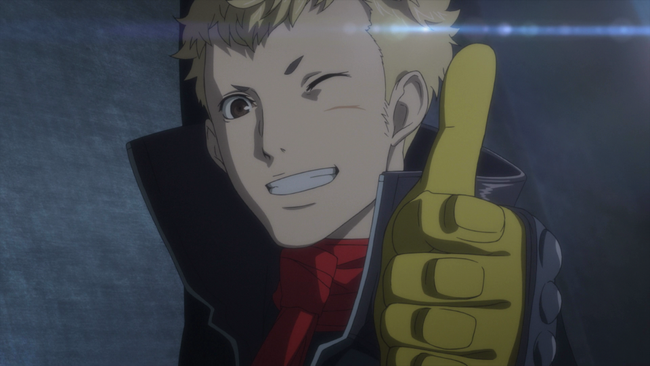
Despite everything stacking up against it, Royal surpassed my expectations entirely. The amount of changes and new content applied to the base game makes it easily the most expansive re-release the company has ever worked on. It sets a new bar for such re-releases by overhauling and improving almost every single aspect of P5, cementing it as not only my favorite Persona game, but my favorite Atlus game. I put 107 hours into the RPG, shed a couple of tears, and was reminded just why I fell so madly in love with Persona, to begin with.
Persona 5 likely needs no introduction, but since Royal was intended for newcomers just as much as it was for returning players, it wouldn’t hurt to offer a refresh. You step into the shoes of a teenager whose name you are free to pick (I’m rather partial to Ren Amamiya), who transfers to Shujin Academy in Tokyo while under probation for a crime he didn’t commit. On his first day, he runs into another delinquent student named Ryuji, and they both stumble into another world while trying to head to school. They discover that the world they’re in is the cognitive reality of the school’s secretly abusive PE teacher who considers himself a king, the school his castle, and the students his subjects. The main character awakens to his rebellious spirit, his Persona, to save Ryuji. Now under the codename Joker, he bands together with a Metaverse-savvy talking cat named Morgana and Ryuji to form the slowly growing Phantom Thieves of Hearts. Their goal is to infiltrate the cognitive “Palaces” of corrupt adults, steal their “Treasures” to force a change of heart, and reform society.
The changes implemented by Royal start subtle, but are very apparent for those with an attentive eye… or ear. New scenes have been sprinkled throughout the opening hours to both add more personality to the main cast and also introduce the game’s new story content. Every single main character has new portraits drawn for them, so they can emote more widely based on the dialogue, and I adore every single one of them. The addition of new character portraits is perhaps a small detail, but they add a ton to the emotional weight of certain scenes and even ones meant to just be wholesome or comedic.
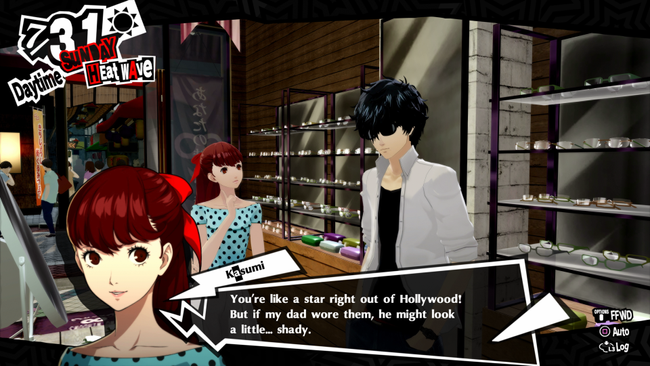
Royal’s most advertised additions to the story are the two new characters: the new party member Kasumi Yoshizawa, and the counselor Dr. Takuto Maruki. In addition to fan-favorite Goro Akechi, they are both important to the game’s new playable third semester. I’ll go into that later, but I was pretty impressed with how the new story scenes managed to be both seamlessly weaved into the original narrative while still standing out to me as new despite having not touched P5 since it came out three years ago. There wasn’t a single new scene I didn’t enjoy, and I’m happy that Atlus decided to use this opportunity to flesh out both the world as a whole and the friendships between the Phantom Thieves. Another little addition that helped me get through the game’s comparatively slow-paced opening was the new voice acting added to many of the impactful scenes that were previously unvoiced outside of characters making random grunts or occasional quips. These haven’t been eliminated entirely, but I still really appreciate just how many scenes now have unique voice acting. This also carries over to the intro scenes of almost every single Confidant in the game, which I think helps leave a better first impression the player has with them.
Being on probation, Joker needs to balance his work as a Phantom Thief with his life as a normal high school student. This is the main gameplay loop of Persona 5, which combines turn-based dungeon crawling with an in-depth social simulator. During missions, players are given a few weeks of in-game time to navigate to the end of their target’s Palace and steal their treasure.
On the surface, infiltrating Palaces seems mostly unchanged, but the alterations to both combat and exploration will quickly stack up and are almost overwhelming for players who remember the original as much as I do. Joker is fitted with a grappling hook this time, which allows him access to new areas that either change up the nature of progression or give him access to more secrets. By progressing in the new confidant with Kasumi, you even gain the ability to use this to zip toward enemies from a distance.
Because of the grappling hook addition, every single Palace has been redesigned to various degrees to compensate while keeping the same overall structure. None of the Palaces have severe overhauls to their designs, but I enjoyed all of them more than I did in the original (looking at you, Okumura) since there are noticeable changes to areas. Each boss has also been redesigned, and in my opinion, each change has made the fights more fair and interesting. The grappling hook could have just been some tacked-on gimmick, but the designers used this opportunity to thoughtfully expand on the original dungeons in clever ways to improve the experience for returning players, as each Palace was rebalanced to make it easier to clear it all in a single visit. However, I don’t believe this will make things too easy for new players since this really only applies to people who know what they’re doing.
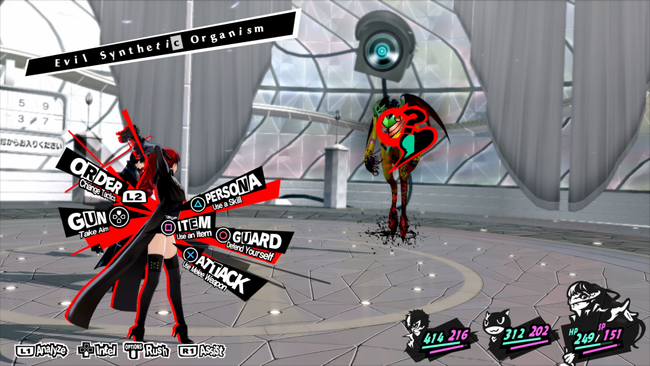
One of the biggest ways they’ve done this is with Will Seeds. There are three of these spread throughout each dungeon, rewarding players for being thorough in their expeditions. Every time you find one, the entire party has a small amount of their SP restored. When you find all three for a palace, they fuse together to make a powerful accessory. These accessories can give buffs and/or a new ability to the party member they're equipped to. This encourages players to be as thorough as they can when exploring Palaces since they’re rewarded with a great piece of equipment, but keeps it from being too challenging since a strong mini-boss needs to be defeated to collect all three.
Shadow Guards roam the floors looking for intruders, which means the Phantom Thieves need to sneak around and ambush them. Navigating them efficiently requires jumping from cover nodes, adding a lot of depth to already complicated dungeons. It balances the stealth with combat in a way to keep the dungeon crawling engaging. The thrill of timing your stealth and jumping out to attack enemies never wore off during my entire playthrough. Combat plays out like one would expect from a Megami Tensei game, with turn-based fights with a focus on exploiting elemental weaknesses. When you hit an enemy weakness or a critical hit, you knock down the enemy and can either act again or Baton Pass that extra turn to a party member.
Baton Passing got a wonderful overhaul compared to the original, now being available from the moment you start exploring Palaces instead of requiring progress through Confidants. The new system rewards planning your turns out to pass as many times as possible, since each subsequent pass gives a further boost to the strength of that character’s attack. If you manage to pass the baton to the final party member, that character will get a chance to attack with no HP or SP cost. This starts easy to pull off so players can get used to the mechanics, but as my party grew I found this harder to accomplish but infinitely more rewarding.
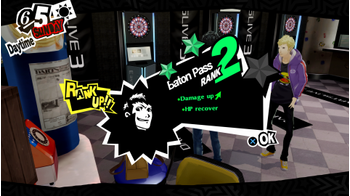
Outside of combat, you will eventually gain access to a place to play Darts in the new area Kichijoji, which requires the use of the DualShock's motion controls and can level up a character’s Baton Pass. This will make the character recover some SP and HP in addition to gaining a bigger damage boost.
In addition to a ton of rebalances to the flow and stats associated with combat, the other biggest addition to combat is the redesign to how guns work. In vanilla Persona 5, you had to conserve your ammo since you only had a set amount for each trip to the Metaverse. I ended up almost never using guns because it just never felt worth it, and thankfully Royal addresses this. Now your ammo will replenish at the end of every battle, making guns actually viable in combat.
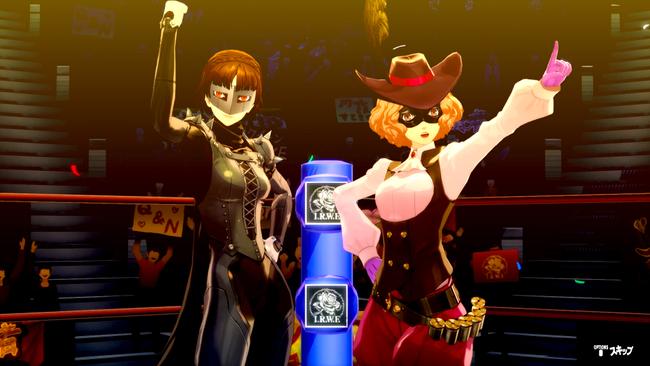
New special attacks can also pop up in combat randomly called Showtimes, which are unlocked through story progression. Two characters will meet up and have a short bonding event outside of Joker’s influence, and will from that point forward be able to activate a cinematic attack featuring both of them to cause massive damage. Each character in the party (with some spoilerific exceptions) has access to two of them, and these can be activated as long as one of the characters is in the active party. These don’t pop up enough to get boring, but you’re able to skip the animation if you want to keep the pace of combat snappy.
When every single enemy is knocked down, you get to hold up the entire group. You’re able to pull off a stylish all-out attack (personalized for the character who knocked down the last foe) or negotiate. As a Wild Card, Joker can obtain multiple personas in addition to his initial one. These personas can be obtained in one of two ways, the first being through negotiation. In addition to being able to ask a Shadow for money or an item, Joker can ask them to become another Mask for him if they are equal to or less than his current level. They ask you two questions, and how you respond to them will decide if they give you an item and run away, attack you, or join you. In the original game, you had to essentially get lucky with your choices, which I was always fine with since I enjoy traditional Shin Megami Tensei games, but I understand why many players had issues with this system. Royal improves on this system by having your navigator chime in to give you a hint about how the personality type of the Shadow likes being responded too.
The other way to gain new personas is by fusing them in the Velvet Room. You can take at least two of the personas in your arsenal and combine them to get a new one, carrying over some of their skills. Utilizing fusion is the best way to make sure you are well-prepped to be able to handle the challenges the game throws at you. Royal has new personas you can fuse, but it also introduces a new aspect to every single persona in the form of Traits. Traits are passive bonuses that give each persona a variety of bonuses in combat, such as single-target attacks causing more damage, support skills costing less SP, and much more. Traits can also be carried over in fusion, and this allows for much more customization.
The Velvet Room can also enter a Lock Down state, temporarily increasing both the risk of fusion accidents and also the rewards. It’s a lot more complicated, but I’ll simplify it to the best of my ability. Personas fused in this state have huge boosts to all of their stats, and some of their abilities will change if you want them to. Letting them change will either get you a much better skill, or a much worse one. After this initial fusion, the next one will almost always be an accident and give you a completely different persona than the intended result. Using the first persona you got again will lead to the accident persona having all of its skills replaced. Sometimes this will get you a ton of powerful skills, but mostly I just got a ton of passive ones, making the new persona useless.
I spent hours save scumming to get good personas, but near the end of the game, the main use of this was to utilize that first fusion to get a much powerful persona and then take two random personas I didn’t care about to see what would happen.
I’ll warn you though, combining this with the ability learned from Caroline and Justine’s Confidant can destroy the normal difficulty for the base game’s content. I acquired a level 98 Satan that was able to cause around 5000 damage at a time to the old final boss. Thankfully the third semester increased the challenge so that even if you gain much stronger personas you can’t easily cheese it.
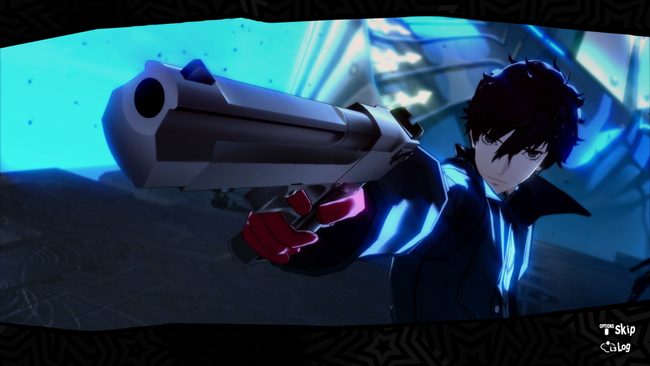
The changes don’t just apply to the metaverse, Atlus also redesigned how you can spend your time in the real world. To compensate for the three new Confidants (all of which are required to unlock the game’s new arc), you’re given much more freedom on how you spend your time. Gone are the nights where you’re tormented by your cat to go to bed during a day that barely had anything remotely to do with the game’s main plot. Almost every single night gives you the freedom to do something, even if it’s just a simple activity to increase one of your social stats. During Metaverse days where you’re too tired to leave the house that night, you can at least study or watch a DVD. This basically eliminates most of the downtime the vanilla game had, leading to an experience where you constantly feel active with how you spend your time.
Planning out how to spend your time has never been so fun in a Persona game, because Atlus cleverly redesigned the entire calendar system to fit in as much to do as possible. Royal as a whole feels more efficient because of this, and this carries over to how hanging out with your friends around town plays out. After every new rank up event, the character in question will call the main character on his way home and either reflect on the day or offer new dialogue that better connects each event. They’ll pose a question, and how you answer it can possibly increase your bond with them. This means fewer days overall are spent wasting time just hanging out with a character just to get closer to the next rank. Two other big changes that make the real world segments more efficient is the ability to sprint and a quick menu you can pull up with the touchpad that can transport you instantly to your hideout, list what stats can be increased that day, and which confidants are available.
One other nice inclusion is the Thieves Den, which works essentially like an explorable and expanded version of Persona 4 Golden’s TV Listings. You can rewatch cinematics from the story, play games with your friends, view art and music, and purchase decorations with coins obtained from the main game to hear your party members comment on them. This entire mode is all about fan service, you’re able to run around as any member of the Phantom Thieves in any costume.
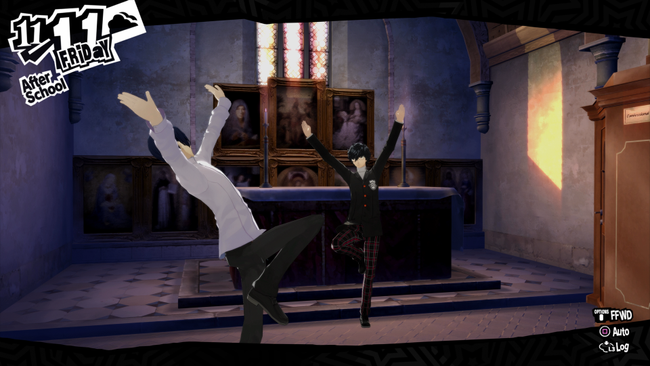
I was not expecting that they would be able to make Persona 5 look better than it already did, but they somehow managed to do that. Texture quality has been improved across the board thanks to the new PlayStation 4 Pro support, but the game still looks noticeably better compared to the original on standards displays. If you get the chance to play it in 1440p, I highly recommend doing so. Running around Tokyo was breathtaking, Atlus’ attention to detail in recreating real locations in their stunning art style is still worth mentioning.
The previously mentioned Kichijoji is full of a ton of new activities, but I frequently would catch myself just stopping to appreciate the finer details of the environment. There was never a single frame rate drop even while playing it in a higher resolution, with it running at a solid 30 FPS. Persona 5 Royal might just be the best looking game I’ve ever played on my PS4 Pro; it looked beyond stunning. Along with a an improved font and faster loading times, Royal is also simply an improvement based on performance and presentation alone.
The music is just as stunning as it was originally, but with 28 new tracks composed by Shoji Meguro, it’s also managed to somehow improve. Like with Persona 4 Golden there’s a new unique battle theme for ambushing foes called Take Over, and I found it somehow more catchy than Last Surprise (which still exists as the normal battle theme).
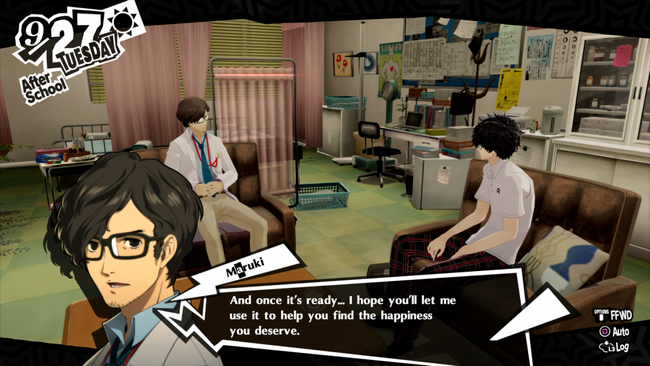
The voice acting is great in both English and Japanese, and both are included on the disc this time. Since the localization got another editing pass, it made me happy that Atlus went as far as to actually record new lines that mesh well with the originals. I played the game with English voice acting and while I love the entire cast, I think Robbie Daymond as Goro Akechi and Billy Kametz as Takuto Maruki really steal the show.
One thing I think what many people will really appreciate is that they addressed the issue that the musical theme that played while exploring Mementos tended to drag, making exploring it feel more excruciating than it needed to be. The new approach is handled in a similar way to how Persona 3’s Tartarus handled its music. Starting with the second major area, the music in Mementos will evolve with each new area to signify progress and the stakes being raised. That combined with the inclusion of Jose, a strange boy that drives around the underground dungeon in a cute little buggy, makes exploring much more fun than it ever was. Each floor contains both flowers and at least one stamp, which can be turned in to Jose for items or changes to EXP, item, and money rates respectively.
Finally, I think Persona 5 Royal does a good job addressing certain issues people had the original game’s plot without changing too much. Instead of rewriting entire arcs (once again, side eying the Okumura arc and the argument that caused it), the design philosophy around Royal is to add more to bridge scenes together better. I was completely satisfied with this, but I understand that this will not be enough for some. I think the absolute best thing Royal adds is a much more satisfying conclusion in the form of the new Third Semester. There are even small new events during this period like actual Christmas Eve dates. I can’t and wouldn’t dream of spoiling what happens, but I honestly think the story here deals with some of the most interesting themes in the series. I do wish Kasumi permanently joined your party before this period, but for her to be included in the base game's conflict any more would likely interfere with some very well done plot twists that happen.
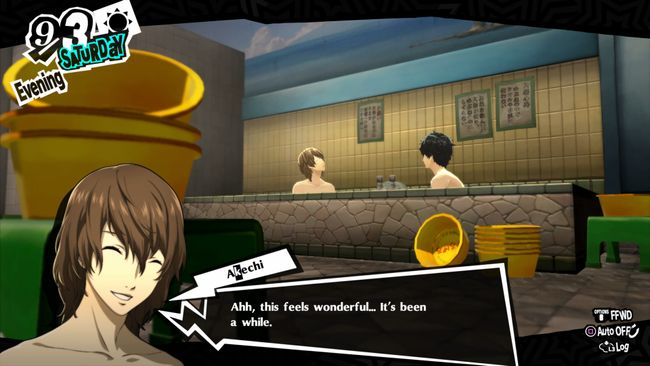
All I’ll say is to make sure you hang out with the three new Confidants (Kasumi, Maruki, and the now manual Akechi one) whenever you can. Certain Confidant Ranks are required to access the new arc and events within the new semester, so I suggest getting those three Confidants as high as possible before December. In any case, it’s wonderful writing that is self-aware of the flaws of the new content in previous Atlus re-releases, understands player expectations, and subverts those in ways that don’t feel cheap in the slightest. The new content isn’t just backloaded either, but cleverly paced throughout the main game to slowly build up all these new plot threads to a satisfying conclusion.
Persona 5 Royal isn’t just my favorite Atlus re-release, it might just be my new favorite Atlus game of all time. I’ve spent the last many days of my life playing this game nonstop, and I never expected Royal would have been good enough to suck me right back in. The original Persona 5 was one of the comfiest games I’ve ever played, and Royal’s effort to add significant quality of life improvements on top of that is impressive. There are so many little details that Royal adds that I wasn't even able to cover, I was blown away that the game somehow would keep surprising me with new features even as far as 50 hours in. The entire game is just Persona 5 but More. If you loved Persona 5 as I did, then Royal will completely blow you away. If you’ve never played Persona 5, Royal will easily be the version I recommend from now on since it improves on every single aspect of the original. If you didn’t like Persona 5 I can’t say for sure that Royal will change your mind, but you’ll likely still appreciate how it addresses the original game’s flaws. I loved getting to revisit my favorite cast of characters, the visuals and sense of style are still unparalleled, and the combat and dungeons stand out as some of the best of any RPG I’ve ever played. Persona 5 Royal is phenomenal, and if you go into it with an open mind I'm sure it'll take your heart just like it did mine.
